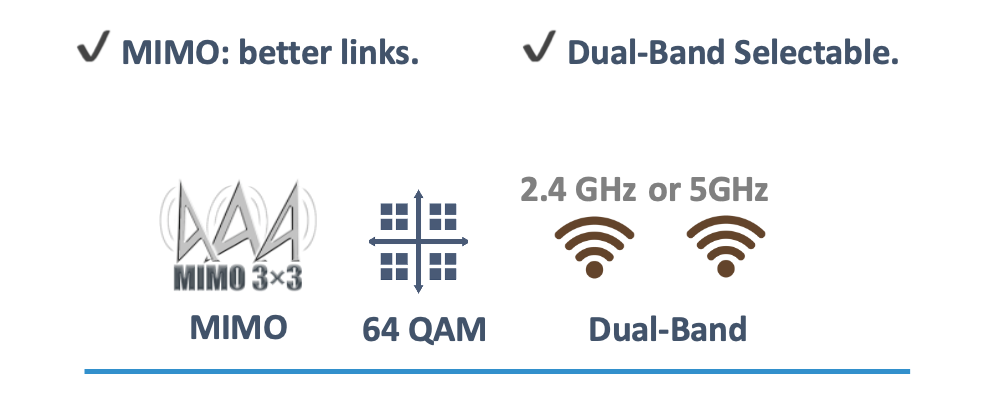AIRETOS Wi-Fi 4:
with the first standard to specify MIMO and to use both 2.4 and 5GHz bands
Wi-Fi 4 connects reliably based on the same protocol features on both 2.4Ghz and 5Ghz bands. It is the first protocol to utilize more than one antenna to maximize thoughput and range. Originally introduced in 2007 as 802.11n to be later assigned the Wi-Fi4 label.
Wi-Fi4 comes with a host of additional features, like standardized support for multiple-input multiple-output (MIMO), 40 MHz channels to the PHY (physical layer) and frame aggregation to the MAC layer, security improvements, the use of MIMO-OFDM, modulation at 64-QAM rate, and more.
E95 Class
WiFi4 Infrastructure
Dual-Band selectable Wi-Fi 4 modules with up to three antenna connectors. Fully featured with enterprise features. like FIPS and CCX compliance, plus Enhanced Transmission Power Accuracy and High-resolution Spectral Analysis. Supports the AR95xx family of QCOM ASICs.
Based on the Peacock reference design.

E94 Class
WiFi4 & BT4.2
Modules based on single-chip technology for switchable use in the 2.4GHz and in the 5 GHz bands, boasting 2-stream 802.11a/b/g/n support and BT 4.2 with BLE and HS. It is designed with the Qualcomm-Atheros AR9462 & AR9485 chips in its core.
Based on the Atheros WB222 reference design.
MRSP Starting at $14.95Heroic milestone & legacy support.
802.11n a.k.a. Wi-Fi4 changed the way we thought about connectivity, making wireless a highly desirable feature across device and application. The update bought in cumulative improvements like the 40Mhz channels, security.features, multiple antenna chains and MIMO.
Wi-Fi 4 multiplied and affirmed the use of 802.11 in our everyday life.

Compliance
Electromagnetic Certification strategies can be complex even with plateaued and legacy technologies. Extended support, maximization of life-cycle and frictionless obsolesce planning are key trust and relationship matters related to solid compliance management.


DUAL-BAND
-
Into the less-crowded 5Ghz
-
Wider channel bandwidths
-
Backwards compatible
Wi-Fi MESH
-
Deployed for density and coverage
-
Wi-Fi4 as first generation to make good use
-
Opens new use-cases and applications



